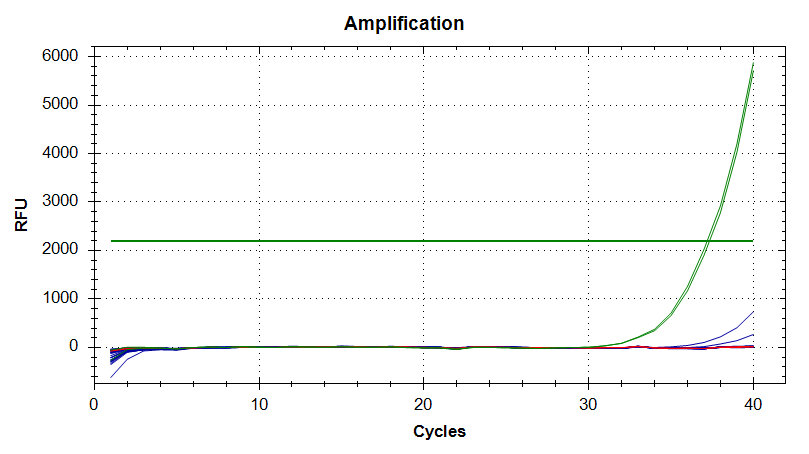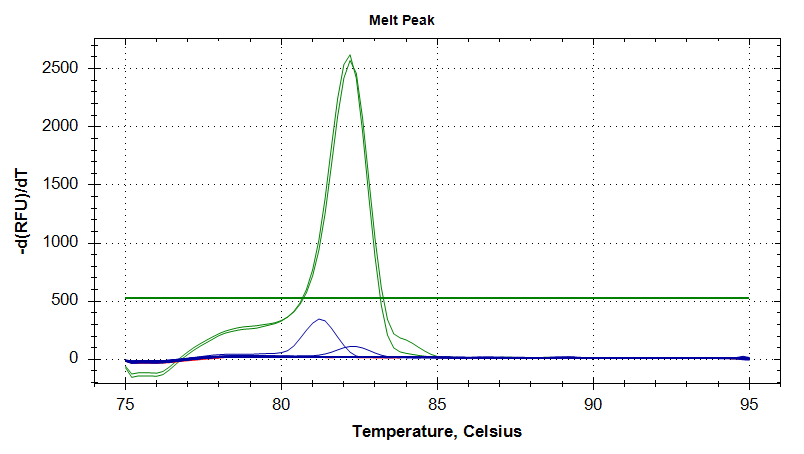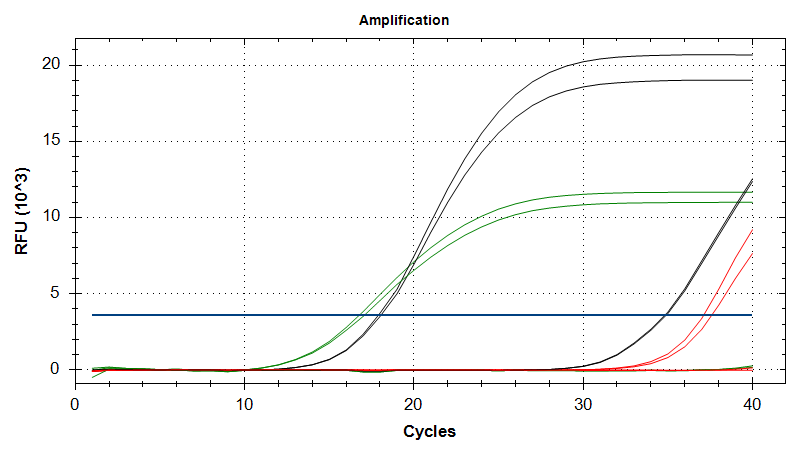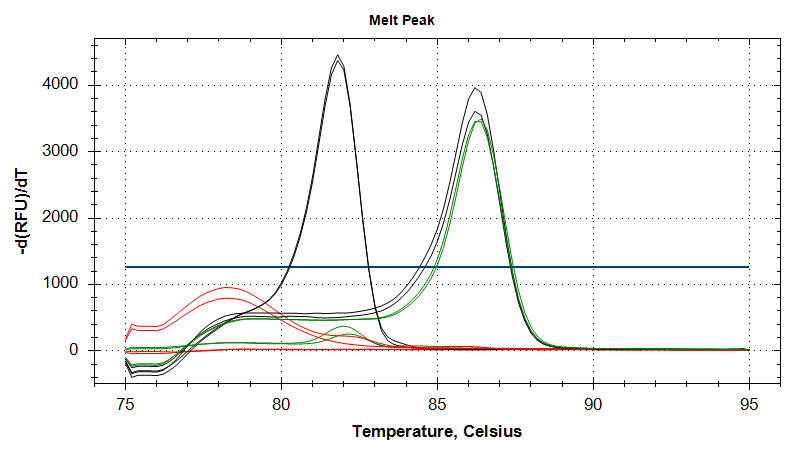After I figured out the appropriate DNA and primers to use to detect gDNA in Crassostrea gigas samples, I checked Ronit’s DNased ctenidia RNA (from 20181016) for residual gDNA.
Elongation factor primers:
- EF1_qPCR_5′ (SRID 309)
- EF1_qPCR_3′ (SRID 310)
BB16 from 20090519 was used as a positive control.
Samples were run on Roberts Lab CFX Connect (BioRad). All samples were run in duplicate. See qPCR Report (Results section) for plate layout, cycling params, etc.
qPCR master mix calcs (Google Sheet):
Results
qPCR Report (PDF):
qPCR File (PCRD):
qPCR Data (CSV):
In the plots below, green is the positive control, blue are the samples, and red is the no template control (NTC).
Everything looks great! Nice, clean, gDNA-free RNA! Will proceed with reverse transcription.
Amplification Plots

Melt Curves


